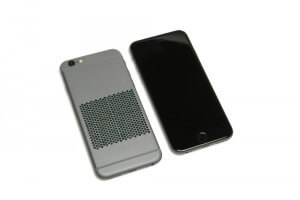 Some Texans in the Houston area said their homes have been much warmer this week, even while they are running their air conditioners, KHOU-11 reported. Many of these Texans claim that someone has been turning up the temperature on their thermostats since the energy shortage began.
Some Texans in the Houston area said their homes have been much warmer this week, even while they are running their air conditioners, KHOU-11 reported. Many of these Texans claim that someone has been turning up the temperature on their thermostats since the energy shortage began.
It turns out that someone was, in fact, messing with the temperature on their thermostats. According to KHOU-11, ERCOT, the Electric Reliability Council of Texas, asked Texans to turn up their temperatures on their thermostats this week (to 78 degrees or higher).
In some cases, it appears ERCOT (and others) aren’t just asking – they are remotely raising the temperature on some Texan’s smart thermostats. The ability to do that, without informing the customer first, appears to be due to people opting-in to enroll their smart thermostats in a program called Smart Savers Texas. KHOU-11 reported that the program is operated by a company called EnergyHub.
The agreement states that in exchange for an entry into sweepstakes, electric customers allow them to control their thermostats during periods of high energy demand. EnergyHub’s list of its clients include TXU Energy, CenterPoint, and ERCOT.
The Verge reported that seasonal energy programs offered by utility companies across the country are intended to work the same way the EnergyHub one is. Consumers who opt-in to them are agreeing to allow their energy company to remotely change the setting on their thermostats.
According to The Verge, Nest owners can opt-in to programs directly via Google (Nest’s parent company), even if their local utility isn’t participating in a program. Honeywell told The Verge that customers who opted-in to their energy saving program allow their smart thermostats to be adjusted remotely. However, customers can override the change.
It is important to note that customers can opt-out of these programs at any time. That appears to include the Smart Savers Texas program run by EnergyHub.






 When Elon Musk’s Tesla Motors acquired SolarCity earlier this year, there was much speculation as to whether or not this was a good idea. SolarCity’s business is based on installing solar power systems, and the company has struggled financially. But Musk must see something good in what SolarCity is doing. Indeed, there are definitely some parallels between the overall missions of Tesla Motors and SolarCity. the main one being to reduce reliance on fossil fuels. To that end, SolarCity recently announced it will
When Elon Musk’s Tesla Motors acquired SolarCity earlier this year, there was much speculation as to whether or not this was a good idea. SolarCity’s business is based on installing solar power systems, and the company has struggled financially. But Musk must see something good in what SolarCity is doing. Indeed, there are definitely some parallels between the overall missions of Tesla Motors and SolarCity. the main one being to reduce reliance on fossil fuels. To that end, SolarCity recently announced it will 




